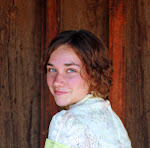


A little about Mongolian Spots:
A couple of years ago, when we first met Tyler, I saw marks on his back and was concerned. I was immediately informed that they were Mongolian spots and that they would fade. Hmm... ok. I then never thought about them again. (He is now three, and although he still does have a few spots, they are considerably lighter.) Then, last year when the twins were born, I came into contact with Mongolian spots again. Only this time, I was a little frightened. (I had forgotten about Tyler's spots ~ he wasn't living with us yet.) The twins were brought directly to me at birth. Of course I opened up the blanket and examined every little detail. The nurses very calmly said that the marks were Mongolian spots and that many Hispanic babies are born with them. My pediatrician said that although it is no big deal, with the babies being adopted, I needed to educate myself, my family, and anyone who would be in contact with the boys. She documented all of the marks, and she checks them at every visit. Here is what I found out about Mongolian Spots...
(by the way, I don't usually even notice their spots. It wasn't until I saw these photos that I went, Hmmm.... who else doesn't know about Mongolian spots?)
What is it?
Mongolian spots (also known as "slate grey patches") are nothing more than dense collections of melanocytes, the skin cells which contain melanin, the normal pigment of the skin. When the melanocytes are close to the surface, they look deep brown. The deeper they are in the skin, the more bluish they look. Either way, they are not related to bruises or any other medical condition. They do not predispose to skin cancer or any other problem.
Who gets it?
At least one Mongolian spot is present on the great majority of babies of Native American, African, Asian, or Hispanic descent. They are also present in about one in ten fair-skinned infants. Despite the name, Mongolian spots have no known anthropologic significance, except for being more common in darker-skinned infants.
What are the symptoms?
These flat birthmarks can be deep brown, slate gray, or blue-black in color. They do sometimes look like bruises. The edges are often, but not always, indistinct. They are most common on the lower back and buttocks, but are often found on the legs, back, sides, and shoulders. They vary from the size of a pinhead to six inches or more across. A child may have one or several.
How long does it last?
Mongolian spots are present at birth, and most of them fade (at least somewhat) by age two. Most have completely disappeared by age five. If Mongolian spots remain at puberty, they are likely to be permanent. Fewer than five percent of children with Mongolian spots still have any by the time they reach adulthood. Those who do tend to be the ones with multiple, widespread spots, or with spots in unusual locations.













1 comment:
That's interesting that all 3 boys had them. I have never heard of it either.
Ugh Lily has been putting her hand in her diaper too. Drives me crazy.
Post a Comment